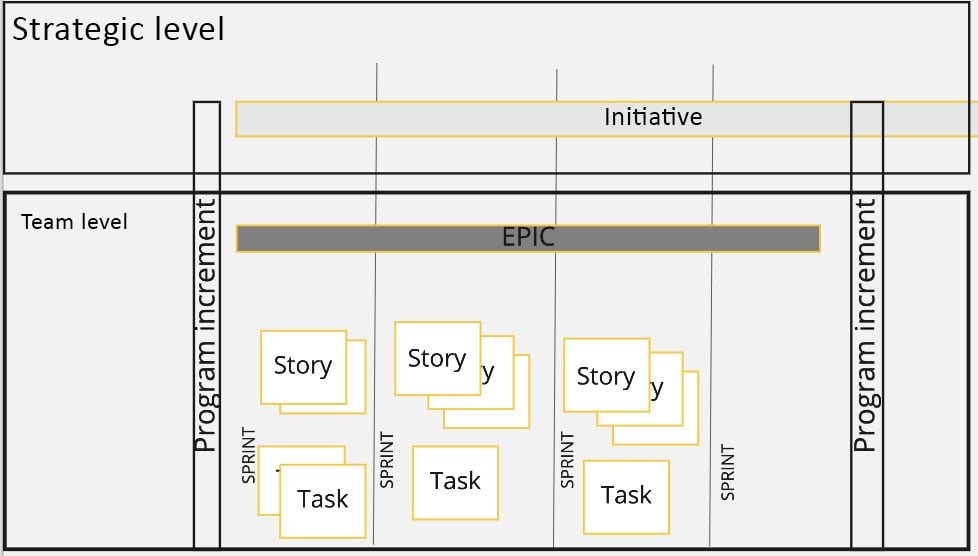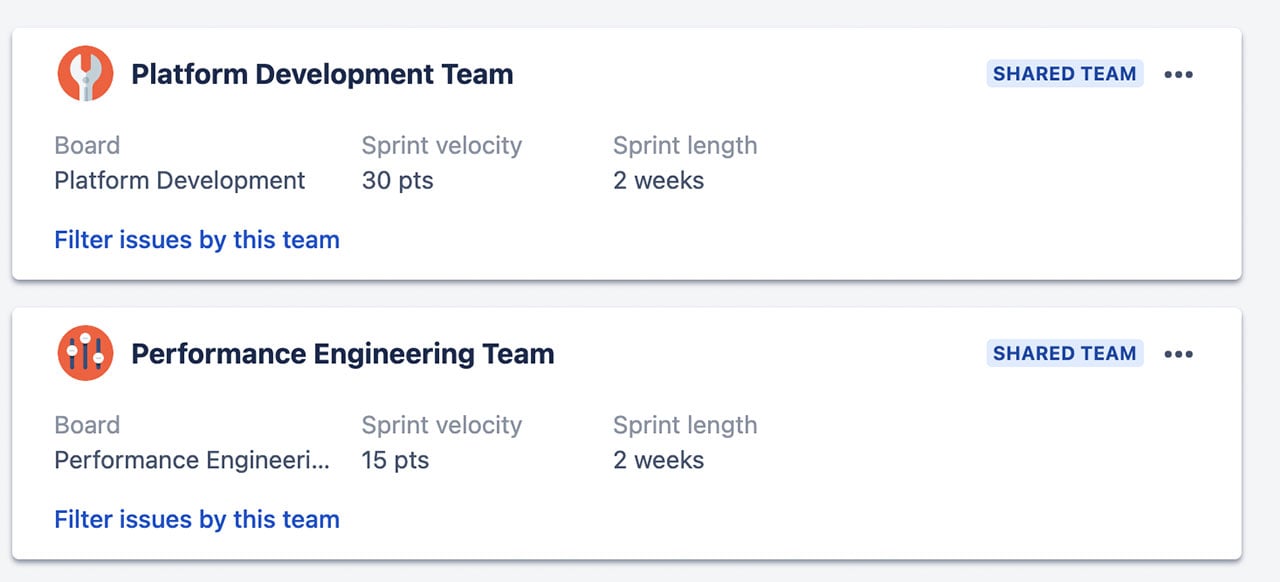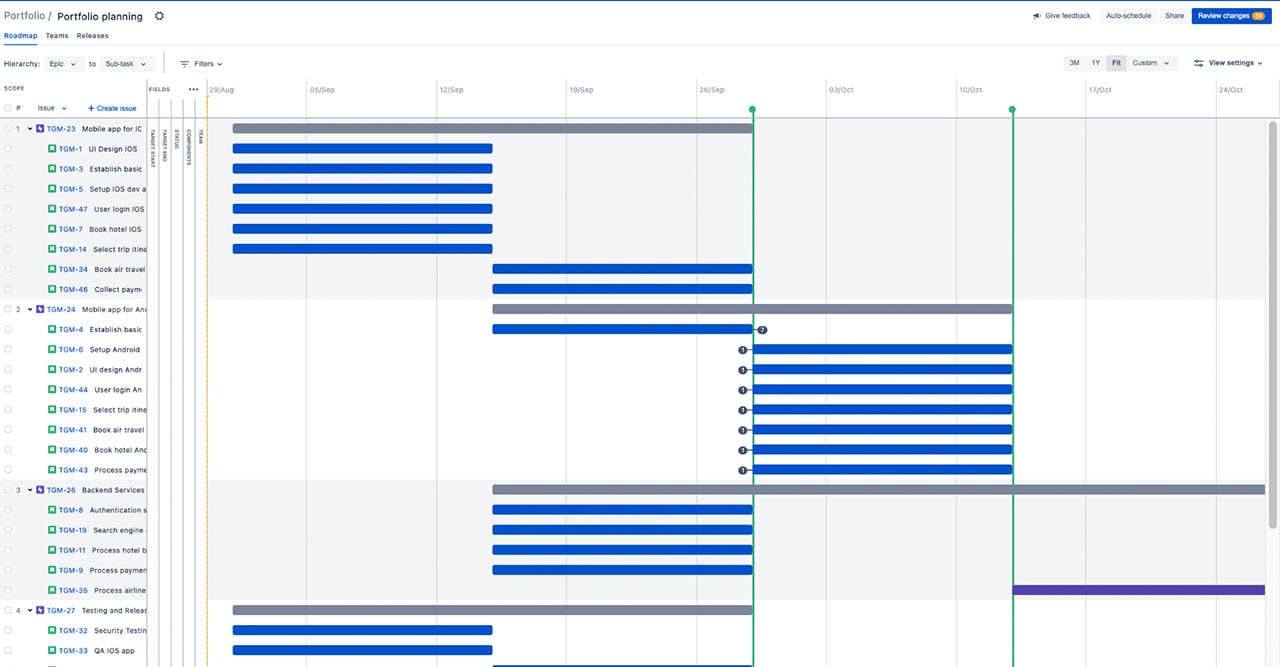Effizienteres Arbeiten mit Jira Advanced Roadmaps

Alle Unternehmen wollen die Zusammenarbeit und Kommunikation aus betrieblichen Gründen verbessern. Aber dazu braucht man:
- klare Prozesse
- ein Team, das die Prozesse in die Praxis umsetzen kann
- (vor allem) ein gutes Unterstützungssystem, das den Benutzern das Leben erleichtert
Jira und Confluence von Atlassian bieten eine Reihe von Möglichkeiten für den Informationsaustausch zwischen Teams und Abteilungen. Darüber hinaus gibt es eine Reihe von Methoden und Tools, die Teams dabei helfen, effizienter an großen und kleinen Projekten zu arbeiten und einen klaren Überblick über die Arbeit zu erhalten. Ein besonders beliebtes und benutzerfreundliches Tool ist Advanced Roadmaps von Jira.
In diesem Blogbeitrag gehen wir auf die Grundlagen von Advanced Roadmaps ein und erläutern die Funktionen und Vorteile, die es bietet.
Ein Tool für alle, die sich einen guten Überblick verschaffen wollen
Advanced Roadmaps ist ein Planungstool, das die Echtzeitinformationen von Jira nutzt. Es geht um Transparenz, um ein besseres Verständnis der aktuellen Situation und der zukünftigen Planung, sowohl für Verantwortliche als auch für Teammitglieder.
Projektleiter, Teammitglieder, Scrum Master und SAFe-Verantwortliche (z. B. Product Owner und Release Train Engineers) erhalten einen Überblick und ein Verständnis für die aktuelle Situation sowie für zukünftige Aktivitäten und deren Status.
Agile Planung und Visualisierung
Die Zukunft ist oft schwer vorhersehbar, weshalb Advanced Roadmaps euch bei einer der Grundlagen des agilen Manifests unterstützen kann: "Reagieren auf Veränderungen statt Befolgen eines Plans". Mit Advanced Roadmaps könnt ihr für die Zukunft planen, indem ihr Projekte und Initiativen in kleinere Aufgaben aufteilt und diese in einem Gantt-Diagramm visualisiert.
Die Bestandteile und Funktionen von Advanced Roadmaps
Ziele klären – Strategie und Team zusammenbringen
Advanced Roadmaps entfaltet sein volles Potenzial, wenn ihr langfristige strategische Planung mit der Arbeit eures Teams in Jira verknüpft.
In eurer Organisation gibt es vermutlich eine strategische Ebene mit längerfristigem Fokus auf Produktinitiativen und -ziele. Mit Advanced Roadmaps könnt ihr diese Initiativen und Ziele direkt in Jira als eigene Aufgabentypen auf einem eigenen Kanban-Board abbilden. So könnt ihr Analysen durchführen, Prioritäten setzen und die Umsetzung gezielt planen.
Anschließend könnt ihr einen Plan erstellen, in dem ihr die strategische Ebene mit den Boards eures Teams auf Epic-, Story- und Aufgabenebene zusammenführt. So erhaltet ihr einen klaren Überblick über den Status der Teamarbeit – gebündelt nach Initiativen und Zielen. Gleichzeitig kann das Team nachvollziehen, welches Ziel hinter jeder einzelnen Aufgabe und Story steht.

Die Abbildung zeigt einen Beispielplan für eine Initiative, unterteilt in die Ebenen Epic, Story und Task. Diese sind als ein Inkrement und vier Sprints geplant.
Erstellt einen strategischen Aufgabentyp
In diesem Blogbeitrag haben wir uns dafür entschieden, den neuen Aufgabentyp "Initiative" zu nennen, er kann aber auch nach der Nomenklatur eures Unternehmens benannt werden, z. B. "Produkt X" oder "Portfolio Y".
Wenn ihr einen neuen strategischen Aufgabentyp erstellt, ist es hilfreich, Folgendes zu bedenken:
- Name: Wie soll dieser neue Aufgabentyp heißen?
- Zweck und Verwendung: Welche Rollen schafft, besitzt und priorisiert der Aufgabentyp?
- Umfang: Wie groß ist der Umfang eures neuen Aufgabentyps in Bezug auf Kalenderzeit oder geschätzte Zeit – Story Points, Wochen, Monate, Start- und Enddatum?
- Arbeitsablauf: Wie sieht der Arbeitsablauf des Aufgabentyps aus? Werden zum Beispiel neue Status benötigt?
- Visualisierung: Benötigt ihr neue Felder, z. B. für die Filterung, Priorisierung oder Wiedervorlage?
Bestimmt den Zugriff – Teilt Informationen mit den richtigen Personen
Unterschiedliche Informationen erfordern unterschiedliche Freigaben – für alle Beteiligten, für mehrere Gruppen oder für bestimmte Personen. Jeder Plan kann privat oder global sein.
- Private Pläne: Der Eigentümer kann wählen, wer den Plan sehen und ändern darf.
- Globale Pläne: Sind automatisch für alle Benutzer von Advanced Roadmaps zugänglich, so dass jeder den Plan sehen und bearbeiten kann.
Prioritäten setzen und planen – mit Ranking- und Teamfunktionen
Rangliste
Eine Möglichkeit, Aufgaben aus dem Backlog in Jira zu priorisieren, ist die Verwendung der Ranking-Funktion. Durch Ziehen und Ablegen von Aufgaben in eurem Advanced Roadmap-Plan wird die Priorisierung geändert, was sich auch in den Backlogs der Projekte widerspiegelt.
Team-Kapazität
Advanced Roadmaps hat eine neue Entität – Team – erhalten, die die agile Arbeitspraxis von Scrum unterstützen soll. Für jeden Sprint werden hier die Sprintlängen der verschiedenen Teams und die Story Points pro Sprint angegeben. Dank dieser Funktion kann die Kapazität des Teams visualisiert werden, und durch die Verknüpfung von Team und Benutzer kann die Kapazität des gesamten Teams aufgrund von Urlaub und Ferien angepasst werden.
 Beispiele für zwei verschiedene Teams: Die verwendeten Boards, Story Points und Sprintlängen.
Beispiele für zwei verschiedene Teams: Die verwendeten Boards, Story Points und Sprintlängen.
Visualisieren – die Daten drehen und wenden
Eine der wichtigsten Stärken von Advanced Roadmaps ist die Möglichkeit, Informationen auf vielfältige Weise zu nutzen und gleichzeitig verschiedene Szenarien zu testen. Dies geschieht mithilfe des Gantt-Diagramms, der Rangfolge, der Gruppierung, der Ansichten, der Filter und der Szenario-Funktionen, die im Folgenden näher erläutert werden.
Gantt-Diagramm
Das Gantt-Diagramm in Advanced Roadmaps zeigt die aktuelle Zeitachse der Aufgaben, ihre Abhängigkeiten und die anstehenden Releases. Ihr könnt das Gantt-Diagramm nach Belieben konfigurieren, basierend auf eurer Vorgehensweise und eurem Planungsprozess. Unter anderem könnt ihr die Visualisierung und die Farben bestimmen auf Basis von:
- Start- und Enddatum
- Verantwortliche Person
- Projekt
- Status
- Teamkapazität
...und mehr

Gruppierung
Die Gruppierung ist eine weitere Möglichkeit, die Informationen in eurem Plan zu betrachten. Ihr könnt zum Beispiel nach Komponenten, Teams und Releases gruppieren. Die Gruppierung nach Team bietet einen Überblick über die Arbeitsbelastung des Teams in den kommenden Sprints, wenn ihr auf Scrum-Basis arbeitet.
Filter
Eine weitere Möglichkeit der Datenanpassung ist die Verwendung der Filterfunktion. So könnt ihr den Plan aus verschiedenen Blickwinkeln betrachten und einen tiefen Einblick in die Anforderungen für ein bestimmtes Release, eine Komponente oder eine Abhängigkeit gewinnen.
Felder anzeigen, aktualisieren und aggregieren
Ihr könnt ganz einfach auswählen, welche Felder ihr für eine Aufgabe in einer Tabelle anzeigen möchtet, um einen guten Überblick zu erhalten. In dieser Ansicht könnt ihr auch Massenaktualisierungen von Feldern durchführen, indem ihr die Funktion für Massenaktionen verwendet. Felder wie Story Point und Datum können auch aus den zugrundeliegenden Stories und Epics aggregiert werden, was ein Bild der gesamten Story Points eurer Initiativen ergibt.
Szenarien
Eine weitere Funktion, die für die Planung genutzt werden kann, sind Szenarien. Mit Szenarien wird eine Kopie eures Plans erstellt, in der ihr verschiedene mögliche Szenarien ausprobieren könnt. Was würde zum Beispiel passieren, wenn eines der Teams gestrichen würde, wie würde sich der Veröffentlichungstermin auswirken, wenn ihr einer kleinen, aber kundenkritischen Initiative, die ihr nicht berücksichtigt habt, Priorität einräumt. Wenn eine Entscheidung auf Grundlage eines Szenarios getroffen wird, ist es möglich, den Plan durch das ausgewählte Szenario zu ersetzen und die Arbeit auf Grundlage der neuen Bedingungen fortzusetzen.
Erste Schritte mit Advanced Roadmaps
Zuallererst solltet ihr euch überlegen, was ihr mit eurem Advanced Roadmaps-Plan erreichen wollt. Wenn ihr sofort mit der Arbeit beginnen möchtet, können diese Fragen eine gute Grundlage sein:
- Welche Informationen stehen zur Verfügung?
- Wie lassen sich die Informationen am besten strukturieren?
- Was muss geplant werden?
- Wie sieht das Team aus? Wer soll wofür zuständig sein?
- Wie werden die Berechtigungen und Zugriffe aussehen? Wer muss was sehen?
- Für wen sollen wir die Arbeit visualisieren?
Abschließende Worte: Einige Ratschläge für den weiteren Weg
Fangt klein an und arbeitet zusammen, um eine nachhaltige Struktur zu schaffen.
Versucht, die Organisation von Anfang an mit ins Boot zu holen und zeigt die Vorteile auf, die die Transparenz des Tools bietet. Advanced Roadmaps ist sowohl für Teammitglieder als auch für den Rest der Organisation visuell wirksam.
Wendet eine agile Arbeitspraxis an. Überlegt euch, was ihr mit dem Tool erreichen möchtet und welche Ziele ihr verfolgt. Nutzt, analysiert und verbessert es – baut die Nutzung schrittweise aus und gewöhnt das gesamte Team an das Tool.
Veröffentlicht:
Aktualisiert:

